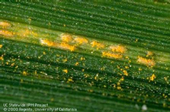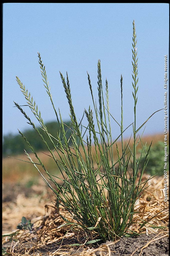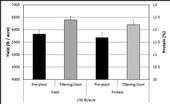- Author: Konrad Mathesius
South Sacramento Valley Wheat and Barley Field Demonstration Day
Wednesday, April 24, 2019, 8:45 a.m. – 10:30 a.m.
23947 Road 13, Capay, CA
8:45 a.m. Registration, Coffee, and Donuts
9:00 a.m. Italian Ryegrass: Updates on Cultivation vs Herbicide Trials: resistance and methods for control
Konrad Mathesius, UCCE Agronomy Advisor, Yolo, Sacramento, and Solano
9:15 a.m. Herbicide Programs for Barley...
- Author: Konrad Mathesius
- Contributor: Cassandra Swett
- Contributor: Sarah Light

Winter temperatures this year have fluctuated from above average early in the season to slightly below average in February. Along with generally warmer temperatures, rain and humidity have been higher than average. The interplay among these factors mean that risk of stripe rust outbreaks may be greater this year than normal.
Stripe rust (caused by the fungus Puccini striiformis) is an important disease in wheat and barley (different strains for each). It is also one of the most noticeable (Image 1). Stripe rust outbreaks can lead to significant yield loss, but the presence and severity of the disease typically varies from year to year. Three factors,...
- Author: Konrad Mathesius
- Author: Lynn Sosnoskie

If growers sprayed for Italian ryegrass earlier this year, it might still be worth keeping an eye out for it in fields and field margins.
Italian ryegrass (Lolium multiflorum) is an annual grass that can sometimes behave as a biennial or short-lived perennial in California. The species is an upright grass (to about 3 feet in height) that germinates in the late fall and grows vigorously through the winter and early spring. The species can be identified by its dark green, glossy and hairless leaves that are rolled in the bud. Auricles are well-developed and the ligules are long and membranous. Once flowering occurs, ryegrass is easily distinguishable by alternating spikelets that run along the length of the main...
- Author: Konrad Mathesius
- Author: Mark Lundy

Much like other parts of California, the Southern Sacramento Valley has seen some substantial rainstorms this season. The weather patterns left growers with a few narrow planting windows spread out over the last two months. This combined with the fact that growing degree day accumulation has been steeper than average (largely due to warmer nights) means that wheat growth stage can vary significantly from one field to the next. Now would be a good time to assess wheat stand, weed pressure, sample for soil nitrate levels, and start planning for nitrogen applications as fields enter the tillering phase of development.
As has been discussed in previous blog posts, nitrogen applications are most efficient when
- Author: Konrad Mathesius
- Contributor: Mark Lundy
- Editor: Rachael Long

Nitrogen budgets are becoming more of a norm for California growers, and more than ever it's important for growers to get the greatest return for their nitrogen applications. One fertilizer management approach that can improve both yield and nitrogen use efficiency is to shift nitrogen applications from being mostly pre-plant to mostly in-season.
Research from the University of California has shown that in-season applications of nitrogen applied from the tillering to the jointing stage resulted in higher wheat yields and grain protein concentrations than pre-plant applications (Figure 1). This is something to keep in mind as we approach the winter growing season.
Figure 1....


